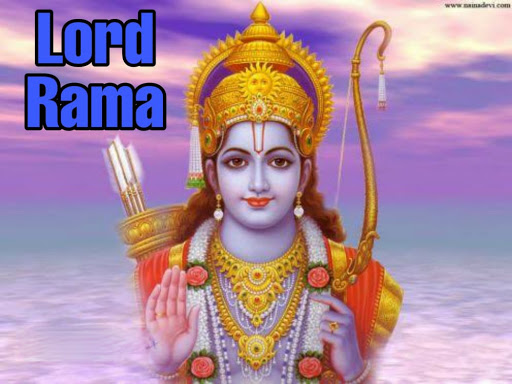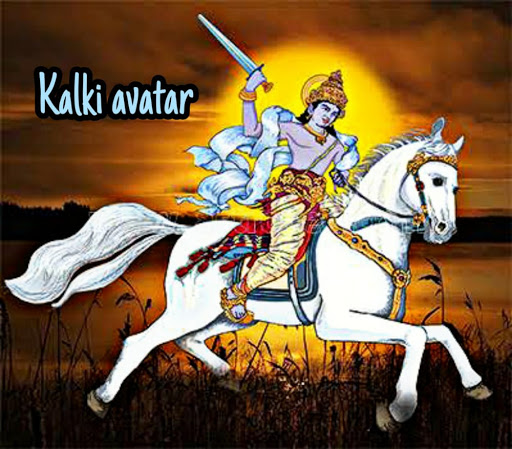 |
| Lord Vishnu and his wife Lakshmi with Seshnag in Vaikundam |
Lord Vishnu is the eagle-riding Hindu god with a pale blue complexion. He is one of the three most important gods in Hinduism, together called the Trimurti. He is one of three supreme Hindu deities, along with Brahma and Shiva. Vishnu is the preserver and protector of the universe. His role as the Preserver is to sustain the universe created by Brahma and maintain order in it. Vishnu does this by incarnating himself into the world in various avatars, Through these avatars, evil is defeated and dharma is restored.
Avatar and its purpose:
There are 24
avatars taken by Lord Vishnu, among the well known are 10 avatars. The
Ten Incarnations or avatar of Lord Vishnu is commonly known as Dashavatar. Two
of Vishnu’s most famous avatars are Krishna and Rama. Vishnu is the Protector
and preserver of the universe. In order to protect the universe and dharma, he
descended on earth in ten different forms or Dashavatar. The purpose of such
avatars is to completely destroy evil and restore dharma.
Ten avatars of Lord Vishnu:
1st Avatar: Matsya (The Fish)
Matsya is
the first avatar of Vishnu. He is the half fish, a half-human form of Vishnu (i.e an
aquatic animal) who can survive only in water. He is said to be the avatar that
rescued the first man, as well as other creatures of the earth, from a great
flood. Matsya gave warning about the coming of the flood and ordered all the
grains and living creatures to be preserved in a boat.
2nd Avatar: Kurma (The Tortoise)
Vishnu’s second avatar took the shape of a human-tortoise called Kurma (the tortoise). During the fight
between God and Giants for milk(Amirtham), churning from the snake, a mountain began to sink and Kurma
then supported the mountain on his back and saved it.
The main purpose to take the form of a tortoise is to support the mountain on his back to churn milk(Amirtham) from the snake.
After the Kurma avatar, Giants got the milk (Amirtham) luckily and devas got poison from the snake while churning. In order to take milk from Giants, Lord Vishnu has taken another avatar called Mohini avatar, and theft the milk from Giants and given it to the devas.
3rd Avatar: Varaha (The Boar)
Vishnu’s third avatar called "Varaha" (shape of a human-boar). In this avatar, Vishnu had a human body with the head of a boar. This birth was taken to rescue "Bhoomidevi" from a very powerful demon called Hiranyaksha, who dragged the Earth to the bottom of the cosmic sea. Varaha went into battle with the demon for a thousand years. After the enemy was defeated, Varaha lifted the earth out of the water with his tusks and rescued Bhoomi Devi and restored order and balance.
4th Avatar: Narasimha (The Man-Lion)
Before this avatar, Hiranyakshipu
began to cause trouble both in heaven and on earth. One day, He found his son
Prahlada, praying to Vishnu and he was so upset. One day, when the demon
challenged Prahlada, Vishnu emerged in the form of a man-lion known as
Narasimha appeared, killed the demon through a loophole in the boon, and
protected Prahlada.
5th Avatar: Vamana (The Dwarf)
The above first four avatars of Vishnu were all in human-animal form and took place
during the period called Satya Yuga, or the first age of the Earth. Vishnu’s 5th avatar, Vamana is the first of the avatars that took human form and lived
during the Treta Yuga or the second age of the Earth.
Vamana (the
dwarf) appears when the demon king Bali ruled the universe and the gods lost
their power. One day, Vamana visited the court of Bali and begged for as much
land as he could cover in three steps. Laughing at the dwarf, Bali granted the
wish.
The dwarf
then appeared as the form of a giant(a big shape or big figure) and took the whole earth with the first
step and the entire middle world with the second step, and then Bali’s head
with his third step.
Bali kept
his promise to Vamana and gave him all the land in the universe. And then, Bali was then
sent to rule the underworld, thereby maintaining order and balance once again.
6th Avatar: Parasurama (The Angry Man)
Vishnu’s
sixth Avatar is Parasurama. In this avatar, he appears as a priest(Brahman), an angry man with
an ax whose role was to kill bad kings, restoring the social order that had
been corrupted by the Kshatriya caste and protecting humanity from danger. Parasurama
received his ax from Shiva, along with the boon or gift of immortality.
King
Kartavirya Arjuna and his army demanded a divine cow from Parasurama’s father
and when he refused they took the cow by force and destroyed the family’s
ashram. In revenge, Parasurama killed the king and his army. This act by
Parasurama was then retaliated by the king’s sons when they killed Parasurama’s
father. The revenge by Parasurama was continued after he killed King's son.
Parasurama
then vowed to kill evil Kshatriyas for 21 generations, after which he stopped
and meditated for the rest of his immortality.
7th Avatar: Lord Rama (The Perfect Man)
Rama or
Ramachandra, Vishnu’s 7th avatar, is one of Hinduism’s most well-known figures.
He appeared in the story of the Ramayana. Rama is often depicted with blue
skin, standing with a bow and arrow.
Rama was a
prince in the kingdom of Ayodhya who was exiled for 14 years. During his exile,
he killed the evil King Ravana to end his terrorizing rule, and to free his
wife Sita, whom Ravana had kidnapped.
The famous
Indian festival, Diwali, is, in fact, a celebration of Rama’s victory over the
demon Ravana, symbolizing the triumph of good over evil.
8th Avatar: Lord Krishna (The Divine Statesman)
Krishna is
Vishnu’s most famous avatar and is usually depicted in the form of a child with
blue skin playing the flute. He was the first avatar born in the Dwapara Yuga,
the third age. There are many stories surrounding Krishna, usually centered on
his defeat of many evil kings and demons. He is known to end the reign of his
uncle Kamsa. During the childhood age of Krishna, Kamsa has known his death will be made by Krishna. So, Kamsa made several attempts to kill Krishna, but he escaped. After Krishna grew up and returned to the kingdom, Kamsa was eventually killed by Krishna.
His role as
the advisor of Pandavas and the guide of Arjuna in Mahabharata. The story of the
Bhagavad Gita was said to be spoken by Krishna to Arjuna during the battlefield.
9th Avatar: Balarama(Krishna’s elder brother)
Balarama
was the elder brother of Krishna in Mahabharata. He is the avatar of
Sheshanaga (or Adishesha), took avatar to help with Vishnu's Krishna avatar. In visual representations, he is usually shown with
pale skin in contrast to Krishna's blue skin. He is known for his strength, for
carrying mace and plow and he was Duryodhana and Bhima’s guru in teaching the
‘Gada’ (the weapon). Balarama is rarely worshiped independently, but stories
always focus on his prodigious strength. He shares many adventures with
Krishna. Balarama
is also known as “God of agriculture”.
10th Avatar: Kalki (The Mighty Warrior)
Vishnu’s
10th avatar, Kalki, is the last incarnation of the god and is believed to be
still yet to come. Kalki is only expected to appear at the end of Kali Yuga,
the current time period. He is commonly portrayed riding a white horse while
carrying a blazing sword. The purpose of his is coming will be to defeat
unrighteous rulers and restore peace to the world.
About Rama:
Rama’s parents - Dasharatha (father) and Kaushalya(mother).
Rama's wife – Sita.
Rama’s Siblings - Lakshmana, Shatrughna, Bharata are the brothers and Shanta is the sister.
Rama’s children – Lava, Kusha (Both are sons).
Weapon - Bow and Arrows.
Birthplace - Ayodhya (Present-day – Uttarpradesh in India).
About Krishna:
Krishna’s Parents - Devaki (mother), Vasudeva (father), Yashoda (foster mother), Nanda (foster father).
Krishna’s Siblings - Balarama (brother), Subhadra (sister), Vindhyavasini (sister) (Vindhyavasini is also known as YogaMaya, or Durga or Adiparashakthi).
(Balarama, brother of Krishna and Lakshmana, brother of Rama are both avatars of Sheshanaga or Adishesha).
(Sita, wife of Rama, and Rukmini, the wife of Krishna, are both avatars of Goddess Lakshmi).
Radha is the lover of Krishna and also an avatar of Goddess Lakshmi.
Birthplace - Mathura.
The Janmashtami festival in August celebrates the birth of Krishna.
About Balarama:
Parents – Vasudeva (father), Rohini Devi (mother).
Siblings – Krishna and Subhadra.
Children – Nisatha(Son), Uluka(Son), and Shashirekha or Vatsala(Daughter).
Weapon – Gada and Plow.
Birthplace - Gokul, a village.














No comments:
Post a Comment